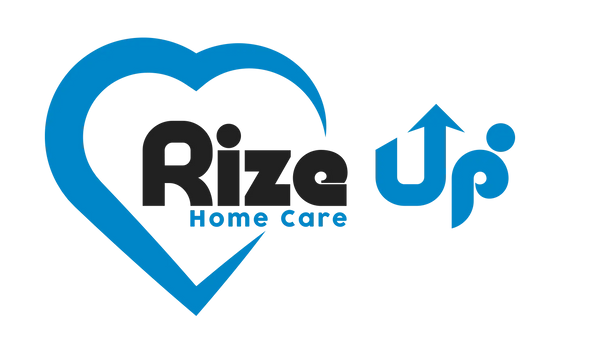Falls can be a serious concern, especially for the elderly. Knowing when to call 911 and how to assist someone who has fallen can make a significant difference in their outcome. This blog will explore the circumstances under which you should call emergency services and how to safely help an elderly person get up from the floor using various lift assist devices. Additionally, we'll discuss the potential costs associated with calling 911.
Assessing the Situation
When an elderly person falls, the first step is to assess the situation calmly and quickly:
- Check for Injuries: Look for any visible signs of injury, such as cuts, bruises, swelling, or deformities. Ask the person if they feel any pain and where it is located.
- Evaluate Their Condition: Determine if the person is conscious, responsive, and able to move. If they are unconscious or unresponsive, call 911 immediately.
- Assess the Environment: Ensure that the area is safe and that there are no immediate dangers such as sharp objects or slippery surfaces.
When to Call 911
Calling 911 is crucial in the following situations:
- Serious Injury: If the person has a serious injury, such as a broken bone, head injury, or severe bleeding.
- Unconsciousness: If the person is unconscious or has lost consciousness at any point.
- Severe Pain or Immobility: If the person is experiencing severe pain, especially in the back, neck, or head, or if they are unable to move.
- Symptoms of Stroke or Heart Attack: If the person shows symptoms of a stroke (e.g., sudden numbness, confusion, difficulty speaking) or a heart attack (e.g., chest pain, shortness of breath).
- Confusion or Disorientation: If the person is confused, disoriented, or unable to communicate clearly.
- Potential Spinal Injury: If there is any suspicion of a neck or spinal injury.
Potential Costs of Calling 911
While calling 911 itself is free, the subsequent services and treatments can incur significant costs. These costs can vary widely depending on several factors, including location, the services provided, and the individual's insurance coverage. Here is a general breakdown of potential costs:
Ambulance Services
- Basic Life Support (BLS) Ambulance Ride: $400 to $1,200
- Advanced Life Support (ALS) Ambulance Ride: $800 to $2,500
- Mileage Fees: $10 to $20 per mile
- Additional Charges: Fees for medications, medical supplies, or procedures performed by paramedics
Emergency Room Visit
- ER Visit Without Insurance: $150 to $3,000 or more, depending on the severity of the condition and the treatments provided
- ER Visit With Insurance: Copayments can range from $50 to $500, plus any additional costs for services not fully covered by insurance
Hospital Stay
- Cost Per Day: $1,000 to $4,000 or more, depending on the hospital, the level of care needed, and the length of stay
- Additional Services: Costs for surgeries, diagnostic tests, medications, and specialist consultations
Other Considerations
- Insurance Coverage: Insurance plans vary widely in their coverage of emergency services. Some may cover most of the costs, while others may have high deductibles or limited coverage for certain services.
- Out-of-Network Providers: If the ambulance or hospital is out of the patient's insurance network, costs can be significantly higher.
How to Help an Elderly Person Off the Floor
If the situation does not require emergency services and the person is not seriously injured, you can assist them using various devices designed for lifting elderly individuals from the floor. Here are some methods and tools to consider:
1. Floor Lift for Elderly
A floor lift for elderly people is designed to help lift them safely from the ground with minimal effort to the caregiver. These devices can be manual or powered. Check out our floor lifts available on our website here:
2. Hoyer Lifts
Hoyer lifts are lifts commonly used in more industrial environments like hospitals and long-term care facilities given their size. They can be used for a variety of tasks including the help of lifting someone off the floor and transporting them from room to room. Though Hoyer Lifts are versatile, the drawback is that they are bulky and will often not work at in-home settings. Further, it will often require some strength from the patient to get them onto the patient sling to be lifted up.
Steps to Safely Lift an Elderly Person from the Floor
- Stay Calm and Reassure: Keep the person calm and reassure them that you are there to help.
- Use the Proper Device: Select the appropriate device for the situation, whether it’s a portable lift, lift assist device, or floor lift.
- Position the Device: Place the device according to the manufacturer's instructions to ensure safe and effective lifting.
- Assist and Guide: Help the person into the device and guide them through the process of being lifted.
- Check for Comfort and Stability: Once the person is lifted, ensure they are comfortable and stable before moving them to a chair or bed.
Conclusion
Knowing when to call 911 and how to assist an elderly person who has fallen can prevent further injury and provide peace of mind. Using devices such as lift assists, floor lifts, and patient lifts can make the process safer and more efficient. Always prioritize the safety and well-being of the person who has fallen, and don’t hesitate to call for emergency help if needed.
By incorporating these tools and methods, caregivers can confidently and safely manage falls, providing the necessary aid to help elderly individuals get up from the floor. Be mindful of the potential costs associated with calling 911 and consider having a plan in place to handle such expenses, ensuring that the person receives the care they need without undue financial strain.

